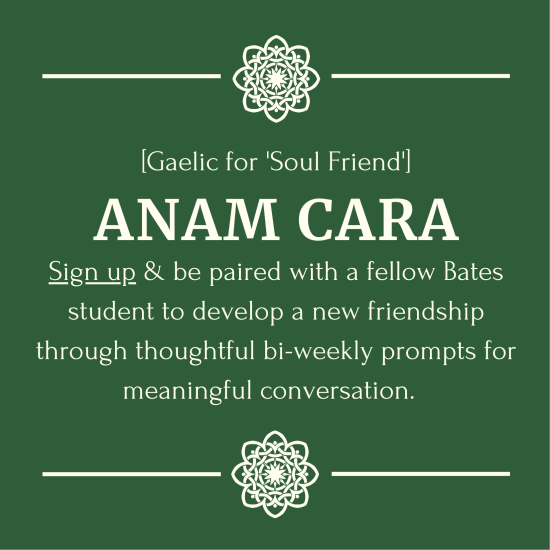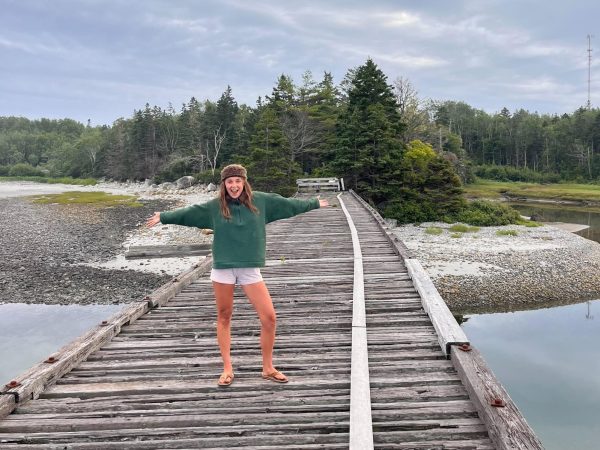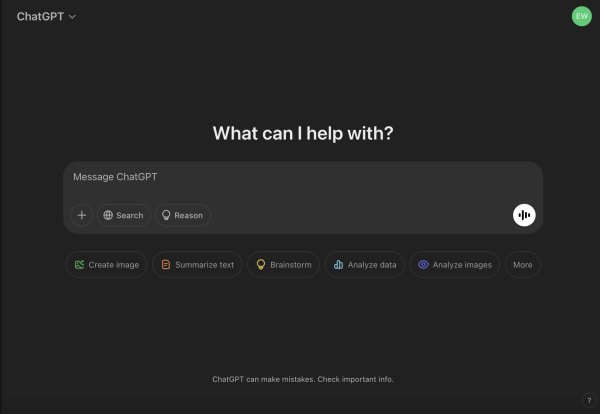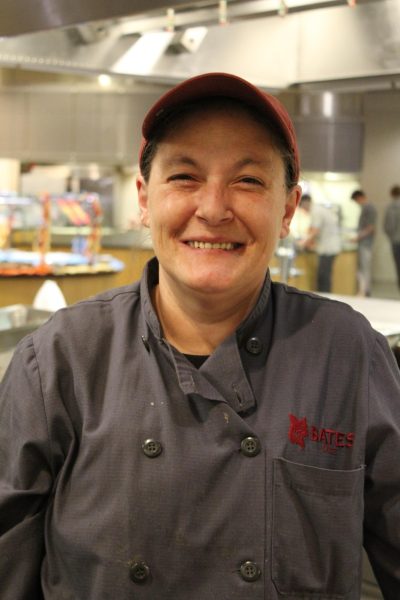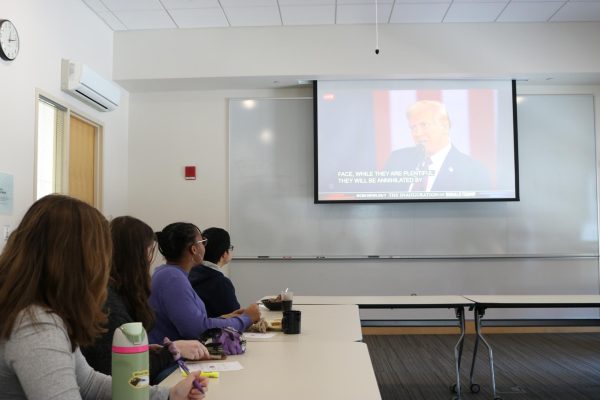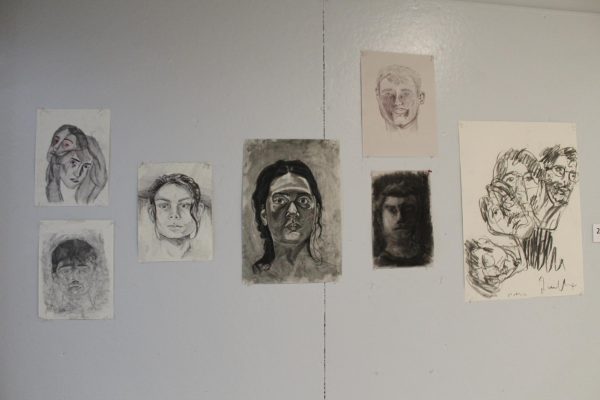Anam Cara Helps Batesies Find Friends
“Anam Cara” translates in Gaelic to “soul friend.” In the Celtic church, an Anam Cara was, “someone you could share your innermost self, your mind and your heart. This friendship was an act of recognition and belonging. When you had an anam cara your friendship cut across all convention, morality and category.”
In 2020, the Multifaith Chaplaincy launched a program modeled after this practice for the student body. To date, around 260 students have participated.
“It started with a really simple question: What do you talk about in commons,” Multifaith Chaplain Brittany Longsdorf said. The answer was that most students talk about homework, stress, lack of sleep and plans for the weekend.
What was missing from a lot of these conversations was, “Our families at home, or our hopes and fears, what we’re struggling with, or what’s bringing us indescribable joy right now.”
Anam Cara is run twice a year, once in the fall and once in the winter. The selection is completely random and to sign up you fill out a short Google form. After that, you receive an email with your Anam Cara copied and the first two prompts.
The prompts center around themes of identity, spaces and people who are important to you.
The goal of Anam Cara is ambitious, “From day one to cut the chit chat out and just say we’re going to try really authentic and deep friendship, right out the gate,” Longsdorf said.
There is very little guidance given besides the prompts and some recommendations about vulnerability and confidentiality, so it is up to participants to build trust between themselves.
“I think anyone who signs up for [Anam Cara], to some degree, you’re in a similar place or mindset. That person is also going to be wanting to engage with you, even if the first time is a little bit awkward,” Frances said.
She finds building it around an activity reduces pressure and awkwardness in the first few meetings.
“To be able to grab a coffee, or have someone over. It’s just really nice and I think builds immediately a community and a trust because you’re wanting to engage with them.”
Frances White ‘23 has been involved in Anam Cara since her sophomore year. “I thought it would be a really good way to meet people who I had friend crushes on, or just people in other grades and other like paths of life.”
That year she had two Anam Cara’s.
“The three of us would meet together, and one of them was in my major, and we became really good class friends,” Frances said. “And the other person lived right next to me in the same hall. And every morning, I would run into him and we would brush our teeth together. And that was really cute.”
For Frances, she’s “more interested in meeting the person than engaging in self discovery or the inner workings of that other person. I think it’s just enjoyable to build that connection and to be able to be someone another person can lean on in a stressful environment. I think that the structure works because I want to get to know them. And I want to be able to have a portal, a gateway into those deeper questions without always having to really ask.”
“I feel like Bates is such an interesting place,” Frances said. “And not always the easiest socially. And it can be hard to make friends. So having a built-in friend who you can be really honest with rather than feeling like you have to be really upbeat and happy all the time was really important for me.”
At the same time, Anam Cara meetings aren’t always emotional and can be much more lighthearted depending on what both people are looking for.
“What you want to bring to the table is what you bring. When I’ve been having hard times, I’ve just been like, this is kind of a big week for me and I don’t really want to dive into it. But I really want to see you and catch up. And it can be a little bit more informal with an understanding of the other person’s emotions.”
Your donation will support the student journalists of Bates College and help us cover our annual website hosting costs.
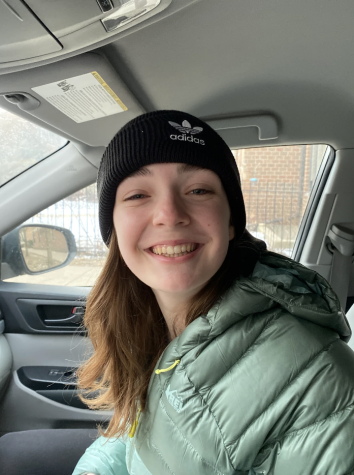
Ella is a senior from Chicago double majoring in Hispanic Studies and Politics. In her free time, Ella enjoys hosting a WRBC radio show, working in...


